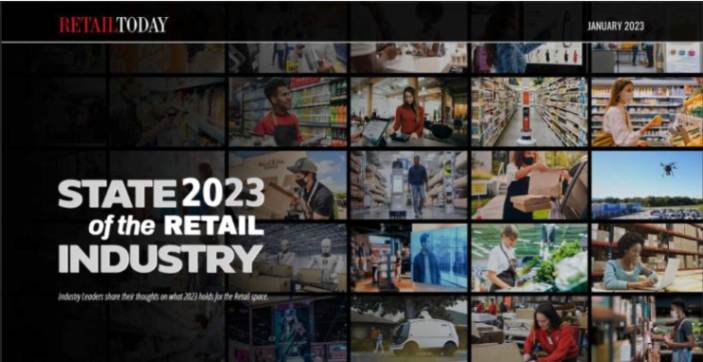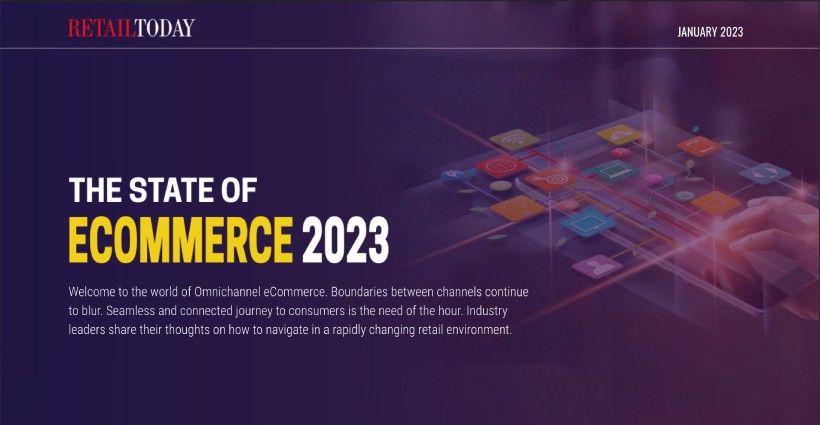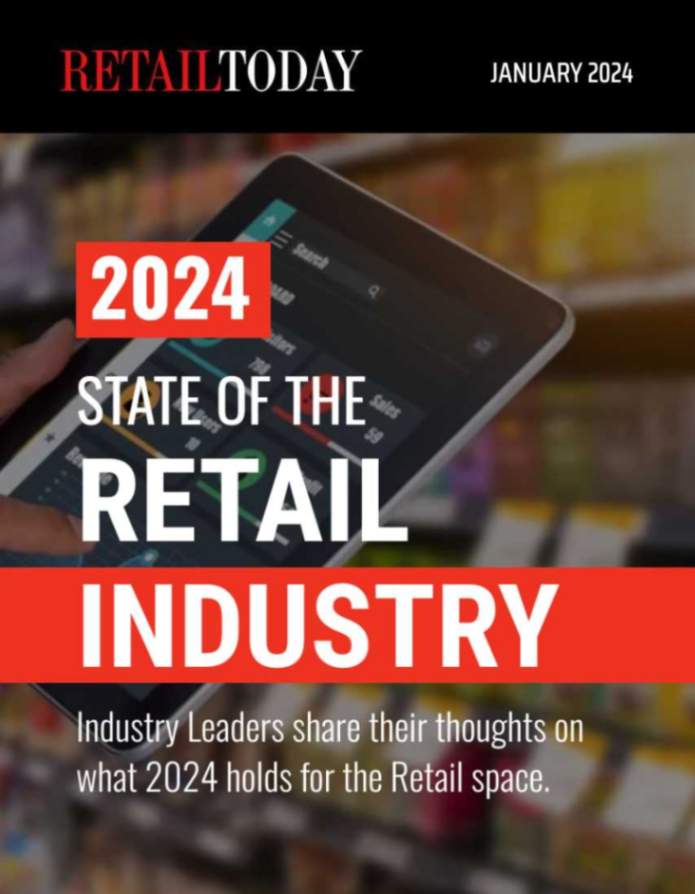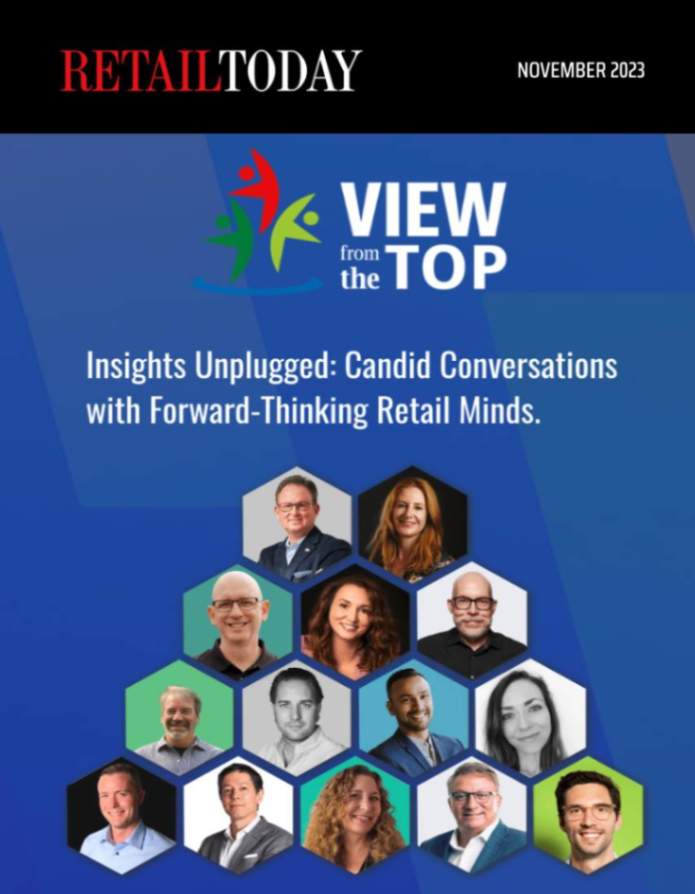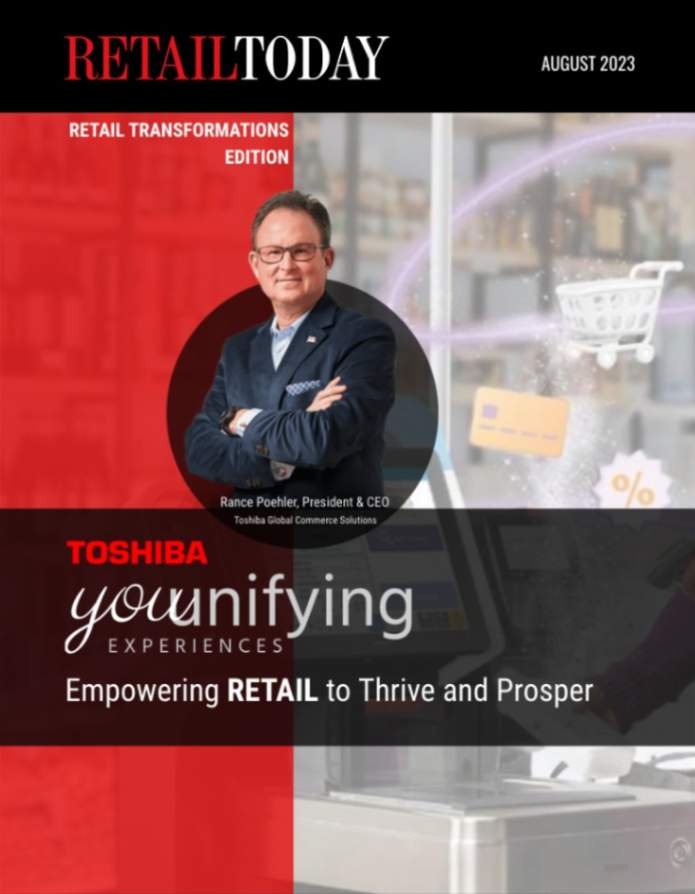
Marketing is everywhere. From billboards to social media ads, we are constantly bombarded with marketing messages trying to sell us something.
But have you ever thought about how these marketing efforts influence consumer behavior?
Marketing has a powerful impact on our decision-making process, from the products we buy to the brands we support.
In this article, you’ll discover the various ways in which marketing can shape consumer behavior.
So, let’s jump right in!
Here’s how marketing influences consumer behavior
In a world where online and in-store experiences blend into one cohesive journey, marketing is pivotal in guiding consumer behavior. Whether it’s getting potential customers to click on a new product or feel comfortable with curbside pickup, marketing has the keys to influence.
Marketing is a strategic blend of various elements that shape how consumers perceive and interact with brands. It’s not just limited to their purchasing decisions. This includes everything from delivery to returns, including how brands use cutting-edge technologies such as AR and VR to enhance in-store experiences.
Consumer behavior isn’t shaped by a single element. Rather, it’s the complex interplay of various factors, each contributing to how a person engages with a brand. These influencing factors can be categorized into four main areas:
- Psychological factors: These include aspects like motivation, perception, and beliefs, which can influence a customer’s decision to choose one-day shipping or opt for an in-store pickup.
- Personal factors: Age, lifestyle, occupation, and personality all play a role in how a consumer interacts with a brand, be it through online shopping or visiting a physical store.
- Social factors: The influence of family, friends, and social media can shape a customer’s preference for certain products or shopping experiences.
- Cultural factors: Cultural norms and values can dictate how consumers perceive different delivery options, return policies, and overall brand image.
Let’s now look at how marketing impacts the consumer decision-making process:
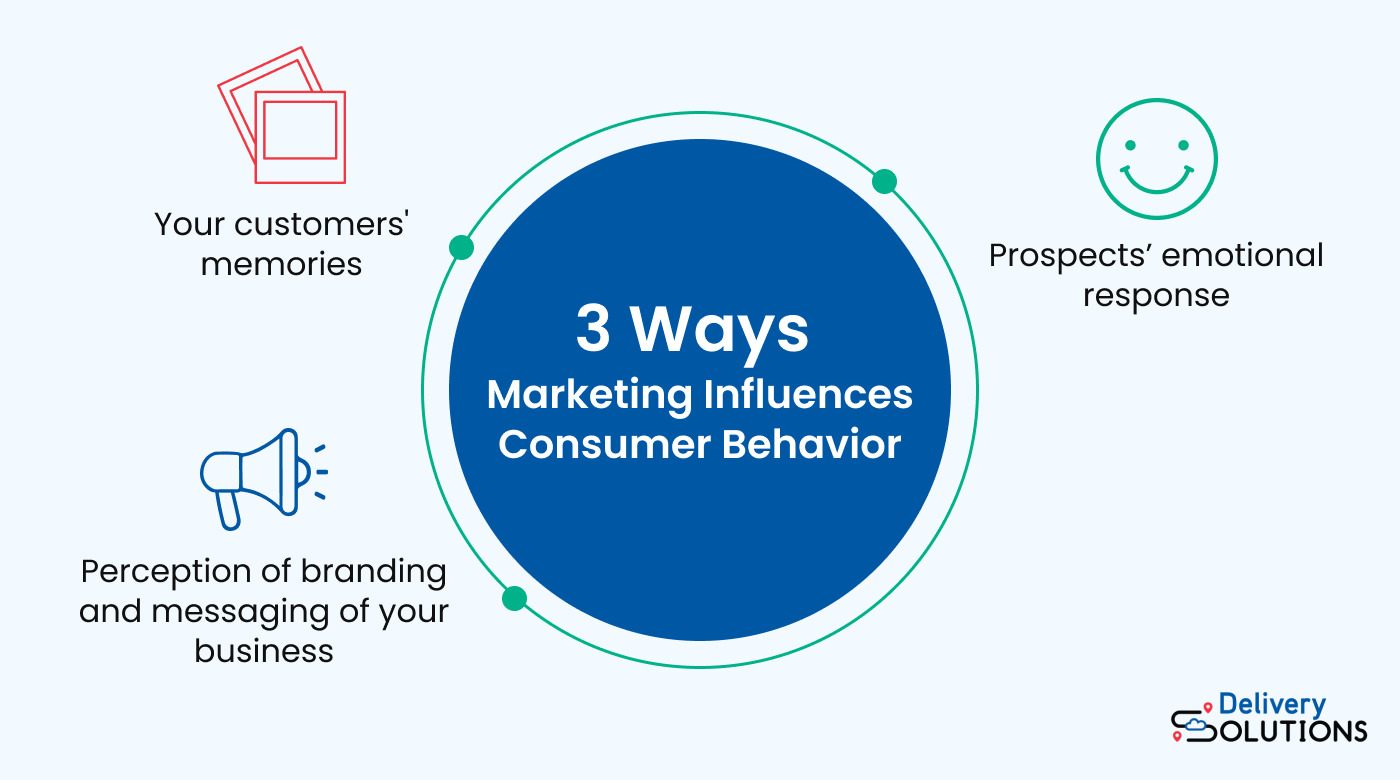
Marketing influences prospects’ emotional response
Whether it’s a heartfelt story about a product’s origin or a fun video demonstrating how easy it is to return a product, marketing campaigns trigger emotions. These emotions can make a brand feel more relatable and encourage loyalty, enhancing the customer LTV (lifetime value).
Marketing influences the branding and messaging of the business
Marketing defines the voice and personality of a business. Through consistent branding and tailored persuasive messages, you can align your in-store and digital experiences, creating a seamless transition for consumers between these platforms.
This unification not only helps in delivering marketing messages effectively but also builds trust and satisfaction — essential factors in retaining customers.
Marketing influences customers’ memories
Memories build loyalty. A memorable in-store experience or a straightforward return process can leave a positive mark.
Consistent and thoughtful marketing strategies ensure these memories build trust and encourage further interaction with the brand.
10 principles of influencing consumer decisions
From the moment a customer enters a store (physically or online) to the time they leave, every interaction counts. Robert Cialdini, in his influential book “Influence,” talks about the ten principles of influencing consumer choices. Let’s review them:
1. Reciprocity
Reciprocity is all about giving to get back. In retail, it can be as simple as offering an unexpected free gift with a purchase or providing an exceptional post-purchase experience.
For example, companies like Sephora may include a small sample of a new product in the package. This not only delights the customer but encourages them to come back for more.
2. Commitment
Commitment in the consumer relationship is all about fostering a sense of loyalty and connection with your brand.
Special incentives, personalized offers, and meaningful connections make customers feel valued and appreciated, thus strengthening their commitment to the brand.
3. Authority
People are naturally inclined to follow expert advice, and you can leverage this principle of authority to influence consumer decisions.
Endorsing products with industry experts or celebrities who align with the brand’s values can create a powerful impact.
For instance, when Sephora partners with a well-known business influencer to promote beauty products, they tap into the influencer’s authority, enhancing their credibility.
By associating your brand with figures that consumers already trust, you can boost sales and build stronger connections.
4. Liking
Consumers tend to gravitate toward brands they like and relate to.
One way to cultivate this preference is by emphasizing sustainability and carbon neutrality with gentle empathy. Consider Big Lots’ efforts to optimize its logistics to reduce carbon emissions.
This appeals to environmentally conscious consumers and enhances the brand’s reputation among broader audiences. It’s about creating genuine connections, expressing shared values, and resonating with what matters to the target consumer.
5. Scarcity
The scarcity principle is a powerful tool in the marketing arsenal, particularly in the retail space.
45% of consumers say that scarcity makes them more curious about a product, and they’re driven to act fast. Limited availability or time-sensitive offers create a sense of urgency, fueling the fear of missing out.
For example, when Sally Beauty releases a limited edition product, orchestrating same-day delivery from specific stores with specific SKUs becomes crucial. With DeliverySolutions’ software, this process is streamlined and efficient. DS ensures that customers can get these exclusive items quickly, enhancing satisfaction and driving sales.
6. Humor
Humor is a powerful tool in digital marketing, making brands memorable and relatable. When humor resonates with consumers, it builds a connection beyond the transactional relationship.
For example, Foot Locker often infuses humor into its advertising campaigns.
This not only highlights the brand’s personality but also creates a fun and enjoyable shopping experience.
7. Social proof
Social proof, such as testimonials and reviews, can be a tremendous driving force behind sales.
Look at Sephora’s website, which is filled with customer reviews and star ratings. These real-world opinions from fellow shoppers help build trust and validate the quality of products.
When consumers see that others have tried, tested, and loved something, they’re more inclined to give it a go themselves. It’s like having a friend vouch for something, providing that extra push toward making a purchase. In today’s digital world, social proof is not just a nice-to-have; it’s an essential element in influencing buying decisions.
8. Color psychology
Colors can be powerful tools in shaping how customers perceive and interact with your brand.
Think about the calming blue Lowe’s uses or the vibrant red that energizes Target’s logo. These colors are no accident — they’re part of a deliberate strategy.
Blue often represents trust and reliability, a smart choice for a company providing essential hardware tools and building supplies. Red, on the other hand, invokes excitement and attention — perfect for grabbing shoppers’ eyes.
With DeliverySolutions’ omnichannel experience management (OXM), you have the ability to use 100% white-labeling of customer-facing experiences. So, any choice about color or presentation will translate seamlessly across platforms.
9. Novelty
Consumers are drawn to fresh and exciting experiences, and DeliverySolutions (DS) is at the cutting edge of this omnichannel innovation.
Whether it’s paperless returns, autonomous or drone deliveries, storage locker pickups, or curbside experiences with geofencing where the customer doesn’t need to input car or spot information, DS offers novel logistics options that stand out.
10. Consensus
Ever seen the line “Best Seller” or “Most Popular” next to a product? That’s the consensus at work. Consumers often look to others’ opinions and choices to guide their buying decisions.
If everyone else loves it, it must be good, right? A product highlighted as a top choice in Target can significantly influence individual purchase decisions.
5 tips to influence consumer decisions
Here are the top five tips to influence consumer buying behavior:
1. Be transparent
In a world filled with digital marketing noise, trust is a currency that’s becoming increasingly valuable. Customers aren’t just looking for a product or service — they’re seeking relationships with brands that align with their beliefs and values. Transparency plays a crucial role in building these relationships.
One of the ways you can enhance transparency is through real-time tracking and status updates from delivery through returns. At DeliverySolutions, we offer this service, making the entire process transparent and accountable.
This level of visibility not only adds a layer of trust but also reduces WISMO (Where Is My Order) calls, enhancing customer satisfaction.
2. Offer anonymity
People are increasingly concerned about privacy as data breaches and information misuse are common.
When shopping with a brand, customers want to feel that their personal information is safe and secure. This isn’t merely about protecting credit card details but extends to browsing habits, preferences, and even identities. They want the assurance that what’s personal stays personal.
As an enterprise brand or retailer, you must invest in robust security measures, ensuring that transactions are encrypted and personal data is stored with care. But beyond that, consider offering options that allow for anonymous browsing or guest checkout. By doing so, you show your customers that you respect their desire for privacy, forging a connection that recognizes their needs and values.
3. Prioritize positive customer service
It’s no secret that happy customers are returning customers. A recent survey in May 2022 revealed that 94% of customers said that a positive customer service experience made them more likely to purchase again.
Furthermore, 82% would recommend a company based solely on excellent customer service.
As a business, prioritizing positive customer service isn’t just a nice-to-have — it’s a game-changer. With services like Last Mile Support, you can set yourself apart by offering that critical attention to detail that customers crave.
DS prioritizes this aspect, showing that going the extra mile (literally and figuratively) can translate into brand loyalty and advocacy.
4. Get people to say yes
When you’re engaging with your customers, your end goal is to get that “Yes!” But how can you make that happen in a world where consumers are flooded with options?
The key lies in simplifying the process. Consider your customer’s journey from browsing to delivery, and imagine all the intricate steps in between. Now, think about what would happen if you made those steps effortless, clear, and intuitive. That’s the exact strategy behind our omnichannel experience management.
OXM orchestrates and enables all logistics, pick-up, returns, and post-purchase solutions, turning a complicated web into a streamlined path. It’s about making everything easy for your customers so that they have every reason to say “yes” to your products and services.
With OXM, you’re not just selling something; you’re building a relationship based on trust, simplicity, and satisfaction. And when all those pieces fall into place, getting that “yes” becomes a natural part of the process.
5. Evoke emotions
Emotions play an essential role in your consumer purchase decisions. As a retailer or merchant, understanding this can help you forge a deeper connection with your customers.
Here’s how you can tap into those emotions:
- Understand your audience: Who are your customers? What do they want, need, or dream of? Understanding these aspects will let you tailor your offerings and messaging.
- Tell a story: Share the story behind your brand or product. Make it real, relatable, and something that resonates with your customers.
- Use images and colors: Visuals can evoke strong feelings. Use images, videos, and colors that align with the emotions you want to elicit.
- Provide exceptional service: An unexpected thank you note, swift customer support, or an easy return process can turn a mundane interaction into something memorable.
Ready to influence your consumers with marketing?
The key isn’t just employing strategies like transparency, emotions, or color psychology — it’s about fully integrating them.
Enterprise brands like yours have these covered, but the magic happens when everything works seamlessly together.
That’s where DS OXM comes in. It’s not about starting from scratch but about orchestrating what’s already in place. With OXM, you can create a frictionless customer experience, enhancing what you’re already doing so well.
So why settle for isolated efforts when OXM offers a cohesive, integrated approach? Book a demo today to see how we can transform your existing strategies into a unified, efficient customer experience.
Tyler Cruver brings 8 years of dynamic expertise in business development to our team. A proud alumnus of Bryan College, Tyler’s journey in the field has been enriched by his past roles at Protection 1 and CPI Security. Hailing from Dayton, TN, he’s a nature enthusiast who finds solace in hiking and soccer. Tyler’s passion for exploring new horizons is evident in his love for traveling, with Rome, Italy being his top vacation destination. Guided by his belief in active listening, Tyler’s business philosophy echoes, “You have two ears and one mouth, so listen twice as much as you speak.” When he’s not forging valuable B2B relationships, you might find him savoring his favorite food, tacos de pastor, and indulging in a refreshing agua de jamaica. Tyler’s blend of experience and perspective makes him an invaluable asset to our sales and marketing endeavors.

